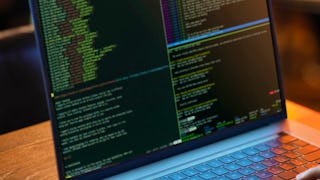The Operating Systems Fundamentals course provides a comprehensive introduction to Linux and equips you with a foundation in this widely used open-source operating system. You will learn about various Linux distributions and the concept of Copyleft, gaining valuable knowledge on different system configurations.

3 days left: Get a Black Friday boost with $160 off 10,000+ programs. Save now.


Operating Systems Fundamentals
This course is part of multiple programs.

Instructor: Shadow Farrell
Top Instructor
19,821 already enrolled
Included with
(128 reviews)
Recommended experience
What you'll learn
Learners will master basic management of Linux from the command line including file management, operating system management and security.
Skills you'll gain
- File Management
- Linux Administration
- File Systems
- Role-Based Access Control (RBAC)
- Ubuntu
- Linux Commands
- System Configuration
- User Accounts
- Operating Systems
- Virtual Machines
- Software Installation
- Command-Line Interface
- Virtualization
- Unix Shell
- Unix Commands
- Open Source Technology
- Linux
- OS Process Management
- Red Hat Enterprise Linux
Details to know

Add to your LinkedIn profile
See how employees at top companies are mastering in-demand skills

Build your subject-matter expertise
- Learn new concepts from industry experts
- Gain a foundational understanding of a subject or tool
- Develop job-relevant skills with hands-on projects
- Earn a shareable career certificate from Akamai Technologies, Inc.

There are 9 modules in this course
In this module, students will learn basic information about the history of computers and Linux. Then students will explore simple shell commands and learn about virtualization.
What's included
13 videos12 readings3 assignments4 discussion prompts
In this module, students will learn the structure of the Linux file system including understanding directories, paths, and naming conventions. They will also learn to search and backup content.
What's included
16 videos9 readings5 assignments2 discussion prompts
In this module, students will learn how to manage text files from the shell. They will master the cat command and the vim Editor. They will learn how to search and filter text files, and work with text streams.
What's included
16 videos7 readings4 assignments
In this module, students will learn about the default user and group accounts, and how to create new users and groups as well as manage passwords. Students will learn about user profiles and using the skeleton directory to set up a template for new profiles.
What's included
12 videos9 readings4 assignments
In this module, students will learn about Linux permissions and ownership. Students will explore the default file and directory permissions, as well as how to change them. They will also master the basics of access control lists and flags.
What's included
11 videos5 readings3 assignments
In this module students will learn about starting and stopping Linux, and managing services. They will explore processes and jobs, and learn to manage them throughout the lifecycle of the operating system.
What's included
4 videos16 readings5 assignments
In this module students will learn about file systems, partitions, and the commands and utilities to manage them. Students will learn about mount points, swap space, local storage devices, journaling file systems and file system maintenance.
What's included
4 videos12 readings4 assignments
In this module students will learn about system initialization, system logs, centralized logging and log file analysis. Students will also learn about Security-Enhanced Linux and security policies.
What's included
3 videos8 readings3 assignments
Students will demonstrate mastery of the material by creating and uploading a capstone project.
What's included
2 videos1 peer review
Earn a career certificate
Add this credential to your LinkedIn profile, resume, or CV. Share it on social media and in your performance review.
Instructor

Offered by
Explore more from Support and Operations

Packt
 Status: Free Trial
Status: Free TrialLearnQuest
 Status: Free Trial
Status: Free Trial Status: Preview
Status: Preview
Why people choose Coursera for their career




Learner reviews
128 reviews
- 5 stars
83.59%
- 4 stars
10.93%
- 3 stars
2.34%
- 2 stars
0.78%
- 1 star
2.34%
Showing 3 of 128
Reviewed on Sep 16, 2024
I learned a lot from this. Hope their are more of this free courses to help students
Reviewed on Jun 21, 2023
Great course! Learn't a lot!! Shadow Farrell is a great instructor. Thank You.

Open new doors with Coursera Plus
Unlimited access to 10,000+ world-class courses, hands-on projects, and job-ready certificate programs - all included in your subscription
Advance your career with an online degree
Earn a degree from world-class universities - 100% online
Join over 3,400 global companies that choose Coursera for Business
Upskill your employees to excel in the digital economy
Frequently asked questions
To access the course materials, assignments and to earn a Certificate, you will need to purchase the Certificate experience when you enroll in a course. You can try a Free Trial instead, or apply for Financial Aid. The course may offer 'Full Course, No Certificate' instead. This option lets you see all course materials, submit required assessments, and get a final grade. This also means that you will not be able to purchase a Certificate experience.
When you enroll in the course, you get access to all of the courses in the Certificate, and you earn a certificate when you complete the work. Your electronic Certificate will be added to your Accomplishments page - from there, you can print your Certificate or add it to your LinkedIn profile.
More questions
Financial aid available,
¹ Some assignments in this course are AI-graded. For these assignments, your data will be used in accordance with Coursera's Privacy Notice.

